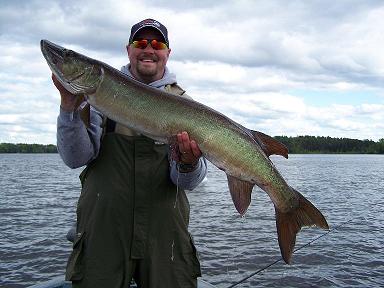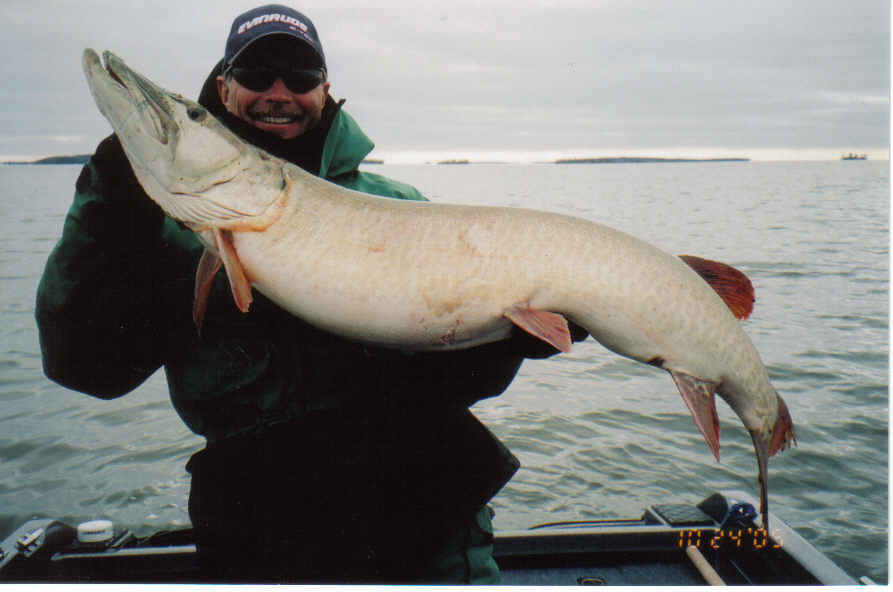|
|

Posts: 229
Location: Plover, WI | Im not sure how much this is a secret, but I'm having trouble weighting a glide bait that has a soft tail. I have a nice sized pile of scrapped blanks that are telling me I did something wrong. Would anyone like to give me some hints?
Thanks
Mike |
|
| |
|
| im no glide expert but your question is vague |
|
| |
|
Posts: 323
| Can u get it to glide without the tail? |
|
| |
|
Posts: 54
| Weighting scheme and body shape of the bait are inseparable. There are a lot of different weighting methods that will get a bait to glide but which one you use should depend on the baits body shape and whether you are looking for long glides or short choppy glides - which is also impacted significantly by the body shape of the bait. Take the balance point weight method for example (weight in the belly at the balance point of the bait when all the hooks, soft tail etc. are on) - if you use that method on a drop belly or short teardrop shaped bait, you'll usually get a shorter choppy glide BUT if you use that same method on a long slimmer body shape like a Manta you can get a longer glide (true the Manta's tail fin stabilizes the bait and helps it put all the energy into the glide instead of belly roll). The same is true for a weight method that takes up the middle third or so of the baits length (multiple weights on balance point and immediately adjacent either side).
Typically, if you use 2 points of weight in the belly, one toward the head and another toward the tail you'll get a longer glide DEPENDING on the body shape and the baits horizontal orientation at rest in the water. The farther the distance between the weight points, the farther the glide IF the bait sits horizontal, not true if the bait sits nose down or nose up.
Hope this helps. |
|
| |
|

Posts: 229
Location: Plover, WI | 1VW, Thank you. I have made regular glides (short choppy glides) with no problem. The weight placement is relatively far apart. (head and tail) I've tried this method with soft tails added, and I lose all side to side action. I've tried moving the weight to the middle balance point, but same reaction. Is there a correlation to size of lure body to size of tail? I feel as if I'm missing something obvious.
[My gliders are about 7" long, 1 1/4" tall straight body, no drop in the belly, flat sides] |
|
| |
|
Posts: 323
| I’ve taken regular squirkos and phantoms and made them soft tails. There is a correlation to lure size and tail size. I like to always have the biggest tail I can have on my gliders for increased visibility. If the tail I put on a bait ruins the action I take a pair of scissors and trim the tail and retest it. I keep trimming a little at a time until I get the action I want. I’ve had good luck with the kalins and action plastics brands or my tails. Good luck! |
|
| |
|

Posts: 2323
Location: SE, WI. | Just physics. Tail acts as a rudder , and restricts swing / glide! Creates drag, and slows/ pulls the bait Back. Get the thinnest plastic possible. I just super glue small amounts of tinsel to rear hook....really looks like a tail....no need to deaden the action....with plastic...IMO JD
Edited by jdsplasher 7/21/2019 11:58 AM
|
|
| |
|

| From my experience with soft tail glides ( only kind i make) best place to start is adding weight as far to the rear of the bait as possible and about 1" back from the tip of the nose. Start with the same weight for each. Then test your rate of fall. When i first started building i liked to drop the bait next to another glider that i like and see if it had a similar fall rate. for instance my 6" gliders have .5 oz in the head and .5 in the tail. but they also narrow at the head and tail leaving the belly ( middle section) of the bait about 3/8s thicker then the rest of the bait creating a ballast to help the bait get its full glide.
My newer skinnier 6" glide is just about the same thickness front to back having head and tail slightly narrow. This particular glider would not run with just two weighted point. I had to add a small amount of lead right infront of the rear eyelet. about 3/10s forward from the ass end. This gave the bait a nice turn/ glide that it did not have with just two weighted points.
The smallest little changes can affect a glider more then you can imagine. , shorter tail , line tie placement. shape of bait and most importantly lead and lead placement. If you fine the bait wont turn hard enough it typically means the ass end does not have enough lead and is not pushing the bait around on the glide. If the bait turns super sharp then the bait has to much head weight. Its a fine line. you want to keep the proper fall speed while getting the glide your looking for. So if the bait is turning to hard but also not falling fast enough you would want to add tail weight instead of reducing the head weight. If it turns to sharp while also falling faster then you would like then you would want to reduce head weight.
Best way of found to test brand new prototypes is get your sink rate correct in a little tub of water. make sure its fall flush and both hooks hit at the same time ( or the nose i tiny tinyyyy bit later then the tail because the added leader weight will even it out). once you have that done take it to a lake or where ever and take your drill with a very small drill bit on it. throw the bait. if it turns too hard drill a tiny bit of lead out of the head and throw it again. so on .
moral of the story is gliders are a pain in the ass. And even once you find the perfect weight you will still need to #*^@ near test every bait and make sure because 30-40 percent of the time (at least in my experience) alot of them still need adjustment.
1. Narrowing tail and head helps the baits turn.
2. add ballast point weight right behind middle of the bait if needed.
3. dont be afraid to tweek line tie up and down sometimes that makes the difference.
hope this helps
[IMG]https://hosting.photobucket.com/images/y71/andy417/0/8f4c28d8-b8e4-4eb0-831d-f32f10394dd4-original.jpg?width=1920&height=1080&fit=bounds[/IMG]
Edited by DJCustombaitsLLC 8/13/2019 9:52 AM
(62426594_701736443588749_3840484418061860864_n.jpg)
Attachments
----------------
 62426594_701736443588749_3840484418061860864_n.jpg (40KB - 539 downloads) 62426594_701736443588749_3840484418061860864_n.jpg (40KB - 539 downloads)
|
|
| |
 Soft tail glide
Soft tail glide Soft tail glide
Soft tail glide